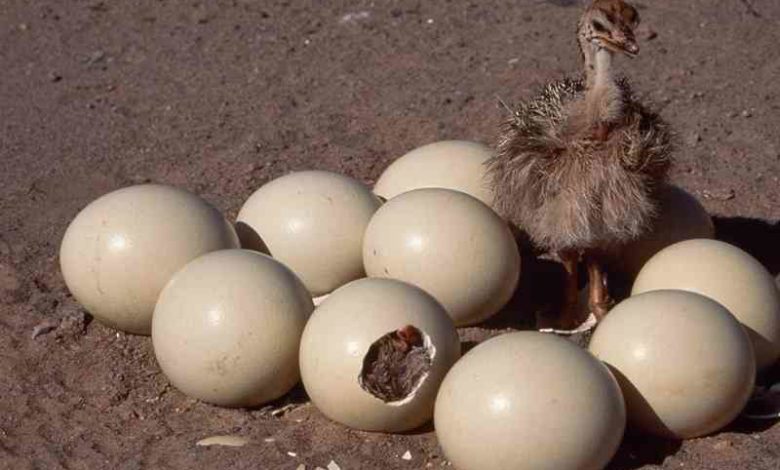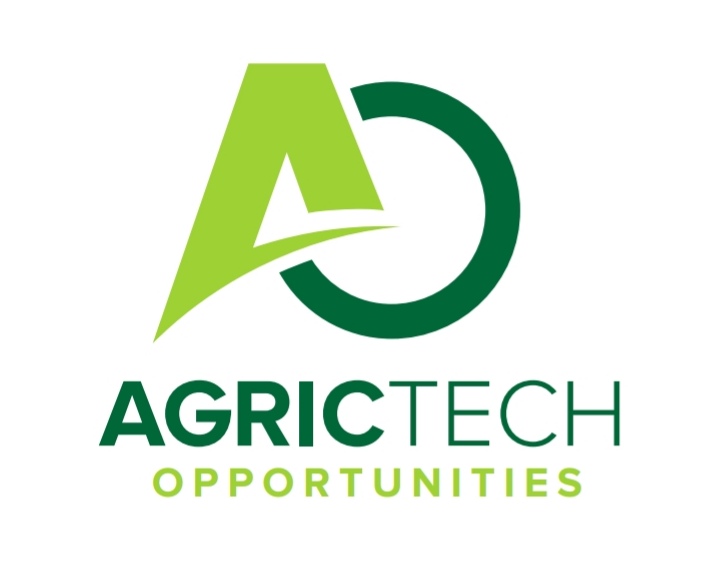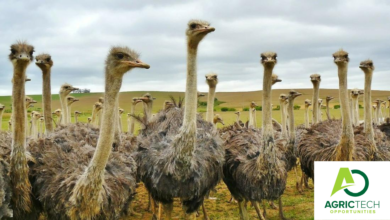An Update On Proper Ostrich Chick Rearing 2023

Host
Ostrich Production
Target Audience
Ostrich Farmers
Introduction
Ostrich identification is important for record-keeping, traceability, and protection against theft. Ostriches are very fragile creatures. Don’t handle unless absolutely necessary for example regular weighing, drug admin. Catch with the left hand at the base of the neck and the right hand being slipped between the legs.
Don’t grasp by the neck or legs. Handling is stressful for ostrich chicks and lowers their immunity. Their height can be used as a guide to their growth instead of weight. Wooden rulers on the walls will allow monitoring of the birds without having to handle them.
ALSO READ: Understanding Fish Reproduction And Spawing Process 2023
Two methods
- Microchips
- Leg bands
Microchipping makes use of microchip implants (inside the body) to identify the birds by a unique number code. Inserted at hatch in the pipping muscle or tail with an implant gun and needle. Permanent and is not subject to being lost, altered, or torn. Read using a microchip code reader and uses common low power radio signal to read the code.
Leg bands
–they are Numbered
–Easy long-distance identification
–placed above the hock or around the ankle
–Available in a variety of colours
Brooding
Temperature
Chicks are unable to thermo-regulate at hatch and must have an external source of heat. During the first two days, should be as close to 35°C as possible. Start at 34-35°C and reduce gradually to 21-23°C at about four weeks of age.
Stocking rates
First few weeks, ostrich chicks should be housed indoors. Unless outside air temperature is too high and it is difficult to maintain a constant temperature inside the brooding quarters.
Floor space requirements
Varies by housing type. Overcrowding during the brooding and rearing stages can lead to slow growth rates, disease build-up, feather pecking and cannibalism. From about 5 weeks of age (depending on weather conditions), the chicks should be allowed out for about one hour daily.
General recommendations
–0-3 weeks 0.5m2
–4-5 weeks 0.7m2
ALSO READ: Approved Factors Influencing Fertility In Dairy Cattle 2023
Drinking water
Fresh clean water at least twice daily. All water containers routinely cleaned and disinfected weekly. Ostrich chicks are initially unable to recognize water, but they like to peck at flat shiny surfaces. To stimulate drinking, it is beneficial to put large shiny objects inside the water containers. As soon as the chicks’ beaks are immersed in the water, they learn how to drink.
Water temperature
–Cool
Stress pack
–First week
–Brown sugar (250g/4.5litres water)
–vitamin/mineral (e.g., vitamin B @ 2g/day per bird)
Consumption
–Monitor
–Dehydration results in concentrated urine
ALSO READ: The Quickest & Easiest Way To The Prevention And Treatment Of Worms For Layers And Broilers 2023
Feeding
Chick can live a few days on the yolk sac drawn into the navel @ internal pip. Adlib – high quality starter mash mixed with finely chopped lucerne leaf or similar fine nutritional fodder (not fibrous). Given as wet feed.
Access to grit – limestone or oyster shell grit, start with grit 1-2 mm in diameter, increased in size as birds get older.
Chick rearing facilities
Brooder house and pens they are nervous animals and require site so as to minimise disturbances. Less dust and dampness to reduce incidences of lung disease. Ventilation and humidity control. Avoid use of any form of bedding/straw – chicks may eat these resulting in gut impaction. To be original (not disused tobacco barns). Proximity to the incubator, and therefore near the producer or manager’s house as possible. Cleaning should remove waste regularly and disinfection spray every few days.
ALSO READ: 6 Approved Common Pig Diseases For | Piglets, Boars And Sows| And Management Strategies
For more updates On Agric Tech Opportunities kindly join the social groups below:
| Join Our Whatsapp Group| Follow us on Linkedin | Also, Follow us on Twitter. |
God bless and All the best !!



